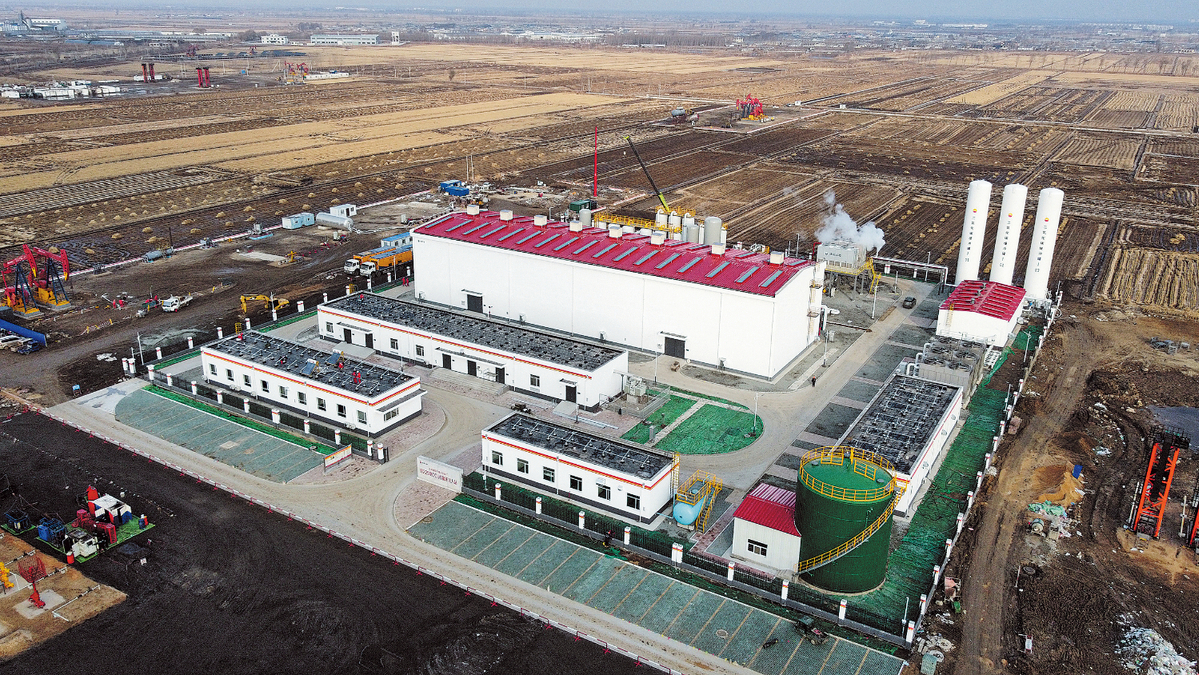Carbon capture tech makes oilfield go greener
Underground CO2 storage in Liaoning cuts emissions while boosting oil extraction rate

Editor's Note: As protection of the planet's flora, fauna and resources becomes increasingly important, China Daily is publishing a series of stories to illustrate the country's commitment to safeguarding the natural world.

Through the development of carbon capture, utilization and storage technology, an extraction area in PetroChina Liaohe Oilfield, located in Panjin, Liaoning province, has been injecting the carbon dioxide produced during the extraction process into underground storage over 3,000 meters deep. This not only effectively reduces carbon dioxide emissions, but also increases the recovery rate of petroleum.
Ma Chenglong, head of the sixth oil extraction area in Liaohe Oilfield and the person-in-charge of the CCUS cyclic injection station, said that since the trial operation of the first carbon storage facility, the 229 Block CCUS cyclic injection station, in Liaohe Oilfield in December, nearly 50,000 metric tons of liquid carbon dioxide isolated from petroleum production emissions have been injected underground.
"This is the only carbon storage facility in Liaohe Oilfield, and by 2026, it will be able to store 100,000 tons of carbon dioxide," Liang Fei, a senior engineer at the research institute, said. "The total carbon dioxide storage capacity can reach 2.36 million tons, which is equivalent to the function of reducing carbon dioxide emissions by planting a forest of 950,000 trees in an area of 10,000 mu (667 hectares)."
The construction of this carbon storage facility is an important project for Liaohe Oilfield to help reach national dual carbon targets and achieve green, low-carbon and clean development.
In September 2020, President Xi Jinping announced at the 75th United Nations General Assembly that China strives to peak carbon dioxide emissions before 2030 and achieve carbon neutrality before 2060, which is China's dual carbon goal.
Peak carbon dioxide emissions refer to the time when carbon dioxide emissions no longer increase, after which they gradually decline.
Carbon neutrality refers to offsetting carbon dioxide or greenhouse gas emissions through activities such as afforestation, achieving relatively "zero emissions".
"Liaohe Oilfield has large carbon emissions and Liaoning is also a province with high carbon emissions, making the task of carbon reduction arduous. The strategic project of carbon storage facilities in Liaohe Oilfield is not only based on favorable conditions, but also an urgent need for the national dual carbon strategic development," Wu Yi, chief expert of Liaohe Oilfield, said.
Injecting gases such as carbon dioxide underground and ensuring their stable storage without leakage places high demands on geological conditions. Wang Zhipeng, director of the injection station, said the 229 Block meets these conditions precisely — the underground rock formations have high hardness and density, and the cap rock is also firm.
























